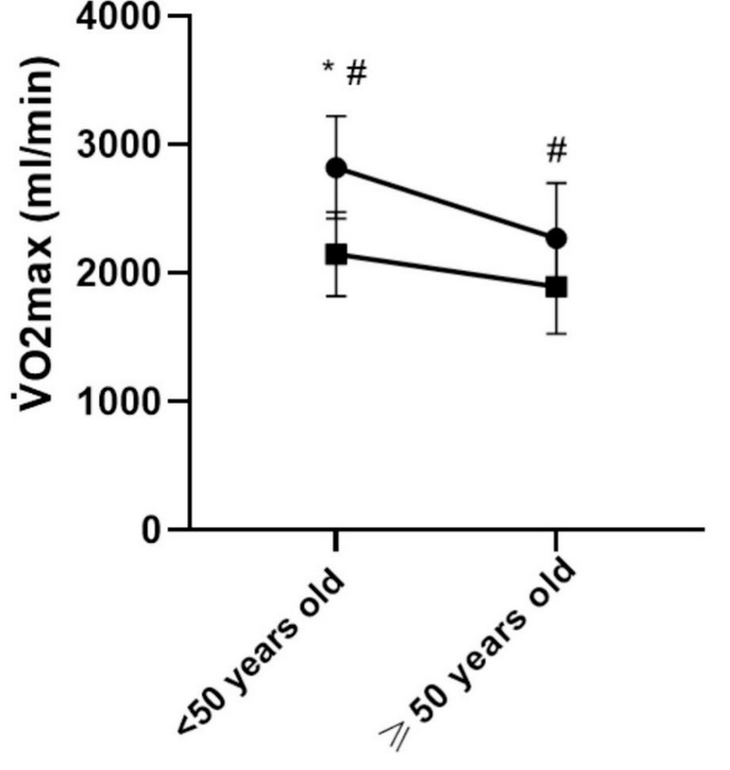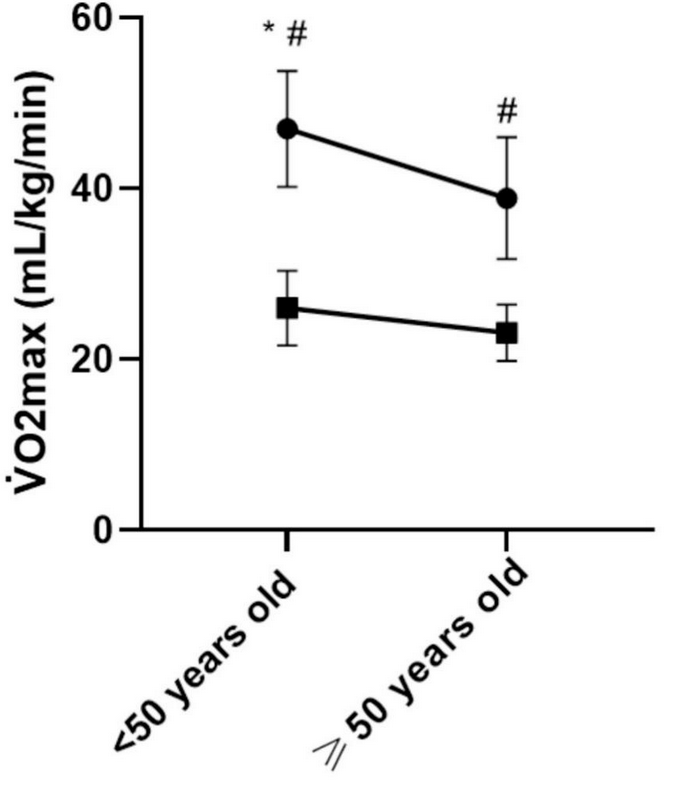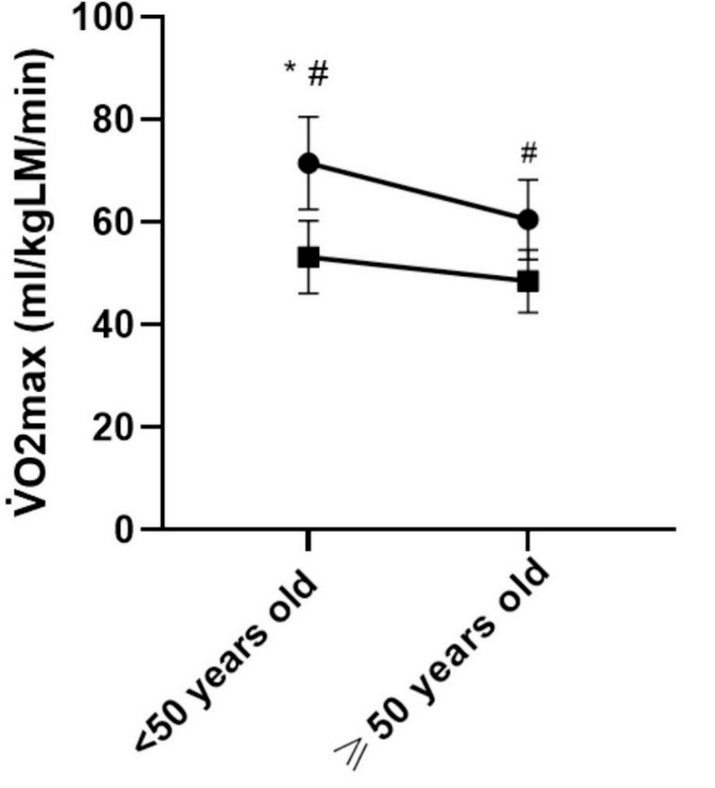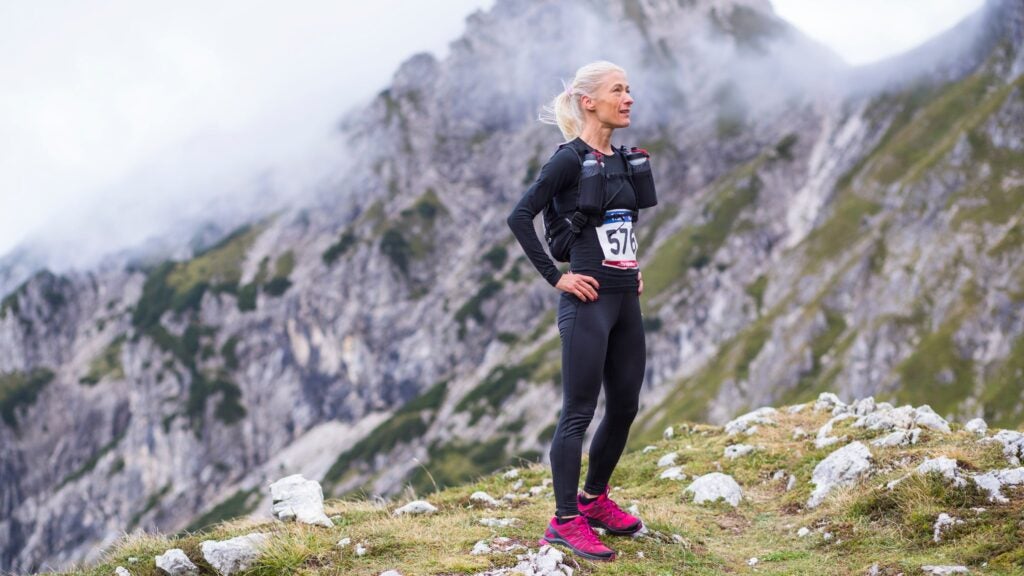“], “filter”: { “nextExceptions”: “img, blockquote, div”, “nextContainsExceptions”: “img, blockquote, a.btn, a.o-button”} }”>
New perk: Easily find new routes and hidden gems, upcoming running events, and more near you. Your weekly Local Running Newsletter has everything you need to lace up!
>”,”name”:”in-content-cta”,”type”:”link”}}”>Subscribe today.
Maximal oxygen uptake, or VO2 max, is perhaps the single best predictor of long-term health and longevity. It’s also the key trait that distinguishes elite endurance athletes. We know all this from more than a century of research… in men. Whether the same things hold true for VO2 max in women is less clear, because there simply isn’t as much data on them.
A new study from researchers at the Federal University of São Paulo in Brazil aims to fill some of this gap. They recruited 85 runners and 62 sedentary people, all women between the ages of 20 and 70, and split them further into younger (less than 50) and older (greater than 50) age groups. Then they tested their VO2 max with a progressive treadmill test to exhaustion, measured their body composition with a DXA scan, and collected information about their training and other health-related habits. The results are published (and free to read) in Experimental Gerontology.
The headline findings are unsurprising: runners had higher VO2 max than non-runners, meaning they were able to suck in, distribute to their muscles, and use more oxygen per minute; younger people had higher VO2 max than older people. But when you zoom in on the details, some more interesting patterns emerge.

What the VO2 Max Data Shows
There are three ways of expressing VO2 max. The first is absolute VO2 max, which is simply the greatest volume of oxygen you can use per minute, usually expressed in liters per minute. If you get fitter, you’ll be able to deliver and use oxygen more quickly, enabling you to power your exercise on sustainable aerobic metabolism for longer. Conversely, if you get too unfit and your VO2 max drops too low, even simple daily activities like climbing the stairs will require more oxygen than you can supply, turning them into challenging anaerobic efforts.
Here’s how the absoluteVO2 max values compared for the four groups, with runners represented by circles and sedentary people by squares:

All this means that absolute VO2 max is a useful marker of health and performance—but it’s less useful for comparison between different people, because the amount of oxygen you use depends on body size. A heavyweight rower might use twice as much oxygen as a diminutive marathoner, but if she’s twice as big then she’s not necessarily fitter. Instead, she’ll need all that extra oxygen to move her larger body around. A better comparison would be to divide each person’s VO2 max by their weight, giving what’s called relative VO2 max, expressed in milliliters of oxygen per kilogram of body weight. Here’s what that data looks like:

The key thing to notice here is that there’s a much bigger gap between the runners and non-runners in relative VO2 max than in absolute VO2 max, which is because the non-runners weigh substantially more on average. The relative value offers a much better reflection of how much fitter the runners are for running: what matters is not just how much aerobic power you can deliver, but how big a load that power needs to move.
Why Body Composition Matters, Too
The researchers also present a less-common third way of expressing VO2 max. In this case, they divided the absolute value not by total weight, but by the weight of each person’s lean mass, meaning primarily muscle as well as connective tissue.
To understand why this is relevant, it’s useful to think about VO2 max in terms of oxygen supply and demand. The traditional view of VO2 max was that it was dictated by oxygen supply—that is, by how quickly you could suck in oxygen, diffuse it from your lungs to bloodstream, and pump it to your muscles. These are all considered “central” limitations on VO2 max. The primary way changing VO2 max, in this picture, is for your heart to get stronger so that it can pump more blood to your muscles.
But oxygen demand also matters. It doesn’t matter how much oxygen you pump to your muscles if your muscles aren’t capable of extracting and, with the help of mitochondria, making use of it to provide aerobic energy. That’s why VO2 max is more closely proportional to your total muscle mass than to your overall weight. If you add ten pounds of fat to your body, your absolute VO2 max won’t change because fat doesn’t consume oxygen. If you add ten pounds of muscle, your ability to consume oxygen will increase, and your ability to supply oxygen will likely follow suit. How much muscle you have, and how effectively that muscle can use oxygen, are “peripheral” limitations on VO2 max.
Here’s what the data showed for VO2 max divided by lean mass only:

An Unexpected Finding About VO2 Max in Women
Here’s where the surprise comes in. Based on earlier data from men, the researchers had hypothesized that these relative-to-muscle values would be less affected by aging than the relative-to-whole-body values. To put it another way, the male data had suggested that age-related declines in VO2max were primarily related to declines in central factors like the heart and circulatory system, while peripheral factors like the ability of muscle to use oxygen stayed relatively constant. But that’s not what they found here: both central and peripheral factors seemed to decline at similar rates in women.
Why should VO2-max declines in women be different than in men? One possibility is that it’s a fluke that’s specific to the relatively small group of women being tested here. But it’s also possible that there’s a genuine difference. The researchers suggest that “intramuscular adipose tissue”—that is, small amounts of fat located within the muscle itself, sometimes referred to as muscle fat infiltration—may play a role. This infiltration tends to be higher in women, and increases with age. If that’s what’s happening, then it suggests that the mechanisms of VO2 max decline—and thus perhaps the best countermeasures—are different in men and women.
There’s one final point to note in this data—one that, in this case, does echo previous findings in men. The runners experienced a steeper VO2 max decline with age than the non-runners. This might be a sort of physiological regression to the mean: the higher you start, the more you’re likely to fall. But it probably also reflects the fact that older runners tend to train less than younger ones, a pattern that showed up in this study too. There are plenty of good reasons for that, but it’s also a reminder: if you’re working hard to be super-fit now, you’ll have to keep working similarly hard to be similarly fit in the future. When it comes to fitness, saving for retirement only takes you so far.
For more Sweat Science, join me on Threads and Facebook, sign up for the email newsletter, and check out my book Endure: Mind, Body, and the Curiously Elastic Limits of Human Performance.
